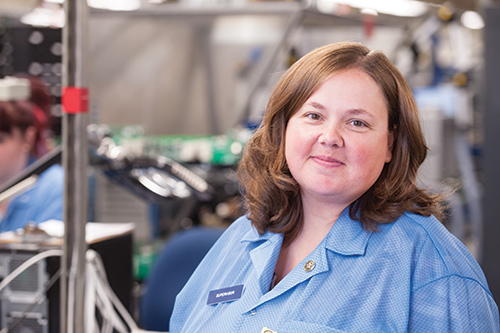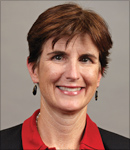Schweitzer Engineering Laboratories (SEL), a manufacturer of sophisticated equipment for utilities and other power systems, is looking to hire scores of electrical engineers right now.
Good luck with that, most recruiters would say, given that SEL is competing against the likes of Google and Facebook, each of which, on any given day, is trying to hire hundreds of electrical engineers, and offering top dollar and the prestige of working at one of the world’s hottest technology companies.
But guess what? Despite a shortage of engineers, SEL will fill the 66 engineering jobs listed on its website, as of this writing, and the hundreds more it is likely to post in the years to come. This remarkable success in recruiting – and retention – also comes despite the fact that SEL resides in Pullman, Washington, a city of just 32,000 – half of them students at Washington State University (WSU) – 75 miles south of Spokane, 285 miles from Seattle and 900 miles from Silicon Valley. Talk about raising the degree of difficulty.
Dale Visokey, a managing director at Crist/Kolder Associates, an executive search firm, has been recruiting talent to industrial companies for more than 25 years, including to such out-of-the-way locales as Benton Harbor, Michigan, Versailles, Ohio, and Oshkosh, Wisconsin. “Attracting talent has to be in the DNA of an organization,” Visokey says, and companies located in small markets must go to increasingly great lengths to stack up against brand name employers in major markets. “The companies that draw top talent to these places tend to be remarkable organizations,” Visokey adds.
What is SEL’s secret?
Well, there is no secret; Ed Schweitzer, founder and president of the fast-growing company, which has annual sales of more than $600 million, gladly shares his HR philosophy and the details of its application:
“We try to run the business the way our moms would want us to,” Schweitzer tells me in an interview. That’s his philosophy, in a nutshell; being exceedingly pro-employee – SEL is 100 percent employee-owned, thanks to a series of transactions Schweitzer initiated – gives SEL the devoted workforce it needs to continually innovate and to deliver top-drawer service. And that produces sales growth and healthy profits.
How SEL applies Schweitzer’s philosophy will account for the bulk of this article because in the SEL experience there are lessons for organizations or all sizes and across industries.
First, though, a few words about Ed Schweitzer. His mantra may be warm and fuzzy, but Schweitzer is a hardcore engineer, with a PhD from WSU, where he first encountered the study of large-scale electrical systems. Picking up a book about protective relays for a class, “I couldn’t put it down,” Schweitzer recalls. He was soon wondering whether these large mechanical devices couldn’t be made digital and therefore more reliable and precise. He built one and wrote his dissertation on the subject, founded SEL in his basement and spent years (while also teaching at WSU) patiently persuading the utility industry to take a chance on his small firm and its product.
Today, SEL employs about 3,800, more than 2,000 of them in the Pullman area, and its customers are found all over the world. Here are details of the HR policies that drive SEL’s success:
- SEL makes a virtue of its location, aggressively recruiting engineers from Schweitzer’s alma mater, WSU; students there get a goodly share of the more than 150 internships SEL has at any one time, and the company winds up hiring more WSU electrical engineering grads than any other employer.
- SEL treats its workforce as a giant networking resource and willingly hires spouses, adult children and other relations of existing employees. It just figures that one smart and motivated person will be related to more such potential hires. What’s more, excluding employees’ relations just wouldn’t work, given SEL’s size relative to its headquarters city. When you factor out the WSU students, SEL employs more than one-in-ten permanent Pullman residents.
- Unlike so many U.S. companies, which want to only hire workers already at the top of their game, SEL also looks for raw talent – people it can train and watch grow into more significant roles at the company. Sara Arar came to SEL six years ago with what many employers would regard as a work history ill suited to cutting-edge manufacturing. She’d run a tiny home cleaning service for 10 years, barely scraping by. But she excelled as an SEL assembler, showed initiative in suggesting better ways to do things, took advantage of constant training opportunities, and today supervises 20 fellow workers who make and test printed circuit boards.

Sara Arar
One of Arar and her team’s constant projects is to upgrade the manufacturing process from simple hand assembly to more rapid and reliable automated work. When that happens, employees aren’t laid off; instead they’re trained to run the machines. “Now you’re going to be a machine operator,” Arar says. “Dignity of work is one of our values.”
- Ideas are welcome. From everyone. Devin Griffin, who works on Arar’s team, suggested reorganizing the storage of fixtures used to test circuit boards. These equipment are quite heavy and have to be lugged around when needed. Previously stored by number, Griffin suggested the most-frequently-used ones be kept closest to the action, and that the heaviest ones be stored at waist height to avoid back strain. A small adjustment, but Arar figured the change saved her team 90 miles of walking in a year’s time and that helped increase circuit boards tested by about one third, to 60,000 a month. Oh, and Griffin was promoted, in part because of this sharp thinking.
- Belief in training and education extends beyond SEL’s facilities. The company offers financial support to workers studying for undergraduate and graduate degrees, and also for coursework as varied as knitting or a second language.
- There’s money to investigate new ideas, as SEL invests more than 10% of annual revenue (expected to surpass $1 billion within five years) in R&D. Luis D’Acosta, who succeeded Schweitzer as CEO of SEL last year after 10 years at the company, says the devotion to R&D and to a long-term outlook distinguishes the company. “We have research facilities you just don’t see in other private companies,” D’Acosta says. He notes a program that allows front-line supervisors to commit relatively small funds and amounts of worker time to improvement projects. Some are adopted across the company after they’re proven on a smaller scale.
- A culture that encourages a healthy workforce: SEL has an onsite medical clinic with nurse practitioners and a physician; a Life Quality Center that includes workout facilities, personal training and nutrition counseling; reimbursement for external gym memberships. We don’t have maternity leave specifically. Instead we have short-term leave for all employees. This can also be used for maternity leave but it’s not technically maternity leave.
- The Friday Lunch: like any employer its size, SEL is a company of specialists, most of whom work on discrete projects, and workers would have little idea how their labors relate to the overall organization were it not for extraordinary efforts to keep everyone well informed. Since the business was operated out of Ed Schweitzer’s basement, there has been a Friday Lunch (originally at the family’s kitchen table), where new projects, products and people are discussed. Lunch is catered and everyone – at SEL locations across the country and internationally – stops working to participate and learn.
How does an employee stock ownership plan, or ESOP, work?
By Mary Josephs
Typically, a founder/owner, nearing time to sell part or all of the company he or she launched, will consider the options:
- Selling to a competitor, also known as a strategic buyer. These transactions, in some cases, bring the absolute highest pre-tax price for a business because the acquirer often cuts costs deeply at the combined companies.
- Selling to a private equity fund, also known as a financial buyer. These buyers are increasingly similar to strategic buyers, as private equity funds seek to roll up multiple companies in the same industry and then sell the company in an initial public offering or to other investors.
- Selling to an ESOP. This route can often bring the seller a better after-tax return than selling to a private equity fund. That’s because federal legislation intended to encourage employee ownership allows the owner of a C-Corporation, selling to an ESOP, to defer capital gains taxes, potentially forever, by reinvesting the proceeds in qualifying securities, namely stocks or some bonds. That saves the seller having to pay combined federal and state capital gains of about 23.5% of sales proceeds, depending on the state.
ESOPs enjoy another major tax benefit. After becoming an ESOP, if a company is an S-Corporation, it pays no federal income tax. As with IRAs and 401(k)s, the tax responsibility rests with the owner-employee, who pays when he or she retires or otherwise withdraws stock. This means that, in the interim, ESOP-owned companies can enjoy superior after-tax cash flow to pay down acquisition debt, invest in plant and equipment or make acquisitions. And founders who sell to an ESOP can participate in this favorable upside; most do so by partially financing the sale of the company, taking back seller notes that also come with stock warrants.
These policies alone might very well have kept SEL competitive in hiring and in its business, but Schweitzer early on decided to take a more dramatic step: he organized an employee stock ownership plan and in 1994 sold 30 percent of SEL to the Employee Stock Ownership Plan (ESOP). There were just 133 employees at the time. True to his engineer’s mind, Schweitzer had been thinking about the best ownership format for SEL to succeed long-term. “The products we make are very serious. Employment is a very serious matter,” he says.
In subsequent years, he sold additional amounts to the ESOP, taking it to 49 percent. And then in 2009, Schweitzer sold his remaining stake, making SEL 100 percent employee-owned.
What does an ESOP bring to SEL? Productivity, for one thing. ESOPs outperform similar companies with different ownership formats. That’s because workers act like the owners they’ve become. Conflict is reduced. Waste is avoided. Ideas percolate up. And employees manage themselves and each other to build their shared investment.
An ESOP also brings significant financial rewards for workers. They typically don’t pay for the stock they receive. It’s granted to them gradually through the ESOP. SEL aims to add 15 percent of an employee’s pay to his or her ESOP account each year. The company has beaten the S&P 500 since the ESOP’s founding. And ESOPs overall, recently studied by EY’s Quantitative Economics and Statistics Practice (QUEST), have significantly outperformed the S&P 500, delivering their worker-owners an 11.5 percent compound annual growth rate vs. 7.1 percent for the S&P 500 on a total return basis.
That’s a big factor in keeping SEL employees around. High levels of employee engagement also allow the company to implement new ideas more swiftly; employees aren’t as defensive and it’s a safer environment because of the policy to redeploy workers who might be displaced by automation and by gains in efficiency. “SEL has never laid off a single person,” says Sara Arar.
About the Author
 Mary Josephs, former head of ESOP advisory at Bank of America, is founder and CEO of Verit Advisors, investment bankers specializing in ESOPs. She is also author of leading blog on ESOPs and middle market M&A. You can reach her at CEO@verit.com.
Mary Josephs, former head of ESOP advisory at Bank of America, is founder and CEO of Verit Advisors, investment bankers specializing in ESOPs. She is also author of leading blog on ESOPs and middle market M&A. You can reach her at CEO@verit.com.







